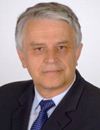
December 15th, 2011
Prof. Zdobyslaw Goraj, representing the Academia in the new ACARE General Assembly, offered an interview about the current activities of the new ACARE.
Prof. Goraj is an aircraft designer and specialist in flight dynamics, head of the Aircraft Design Department at the Warsaw University of Technology. His major topics of interest cover aircraft design and optimisation, stability and manoeuvrability of flying objects; aircraft performances and flight safety. Member of editorial boards of a number of aeronautical journals including Journal of Aerospace Engineering, Journal of Aircraft Engineering and Aerospace Technology, Aviation and others. Initiator & main organiser of the International Seminars entitled: ?Research and Education for Aircraft Design? (1994-2010). Author of numerous papers (more than 100). Doctor Honoris Causa of 2 foreign universities: Moscow State Aviation Institute and Vilnius Gediminas Technical University, AIAA member; ICAS Programme Committee member, President of Polish Society of Aeronautics and Astronautics, Trustee of CEAS, member of the Board of Directors of EASN. Visiting professor in ODU(US), Nagoya (Japan), Kingston (UK) and other European Universities.
Q: Dear Prof. Goraj, you have been recently appointed as the EASN representative in the new ACARE General Assembly. Could you please tell us a few words on the new ACARE?
A: Following the recommendations of the High Level Group on Aviation Research, the first General Assembly of the ?new? ACARE held its constitutional meeting during the Paris air show in June 2011. The General Assembly consists of representatives from the entire Aeronautics community, including the Industry, Air Transport, Research Establishments, Academia, Member States and, of course, a large representation from the European Commission.� The current composition will be working together for the next three years.
Q: What is the mission of the new ACARE?
A: The first important mission of the new ACARE is to produce a Strategic Research and Innovation Agenda, referred to as SRIA.� The SRIA will act as a guide for the research and innovation policy and the initiatives in the EU and the Member States in the coming years. The main aim of the SRIA is to identify the technology needs and propose research and innovation actions towards the goals identified in ?Flightpath 2050?. In order to achieve this, five working groups have been established in the following domains:
o�� �WG1: Meeting Societal and Market needs
o�� �WG2: Maintaining and Extending Industrial Leadership
o�� �WG3: Protecting the Environment and the Energy Supply
o�� �WG4: Ensuring Safety and Security
o�� �WG5: Prioritising Research, Testing Capabilities and Security
These groups are expected to provide input, each in their own domain, towards the SRIA. I should mention that the European Academia is represented in all the above groups thanks to the willingness of fellow EASN members to participate and contribute with their expertise.
In addition to the above groups, the activities of which will continue until the SRIA is issued, three permanent groups are formed which will support the ACARE activities:
o�� �The Monitoring Group, which will be in charge of monitoring the progress against the objectives
o�� �The Communication Group, which will support ACARE communication
o�� �The Member States Group, which is a forum of the EU member states and associated countries.
Again, I would like to mention that the European Academia is present in the 2 first groups. Moreover, in the 3rd Group some of national representatives are coming from academia, as for example in the case of Prof. Jonas Stankunas from Vilnius Giediminas Technical University.
Q: What is the current status of the activities towards the SRIA?
A: All the groups have progressed significantly and have already come up with some first recommendations. A more detailed report on the new ACARE and the activities of the groups, as presented by the EASN representatives in each group, is available for EASN members on the EASN website under http://www.easn.net/documents/3/. The aim is to come up with the final SRIA text by July 2012 which, after being approved by the General Assembly will be presented to the public during the Farnborough air show. The final printed SRIA will be presented at the ILA air show in September 2012.
Q: Thank you Prof. Goraj for this very interesting information. Is there anything else you would like to add?
A: Academia is more visible, recognised and more influential with respect to all important issues related to European aviation as compared to a few years ago. It is seen not only at the ACARE forum. However, there is still a lot to be done in order for the Academia to participate more actively in the overall progress of European aviation sector, especially in its innovative character for the prosperity of the entire European society. The special role of motivating and coordinating these activities within the academic community must be played by EASN.